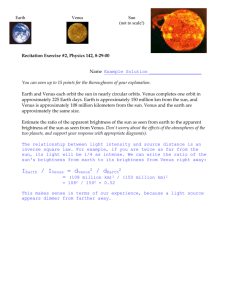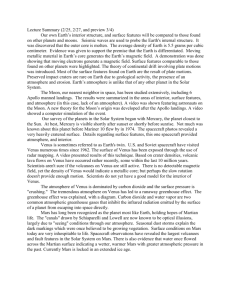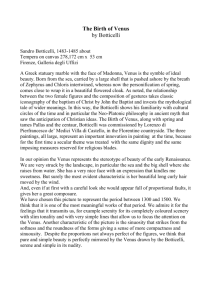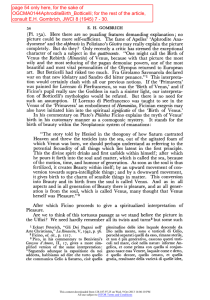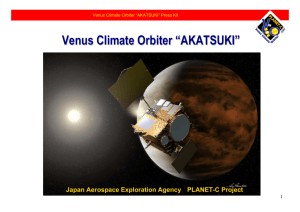Initial Results from the Atkasuki Mission at Venus Takehiko SATOH
advertisement
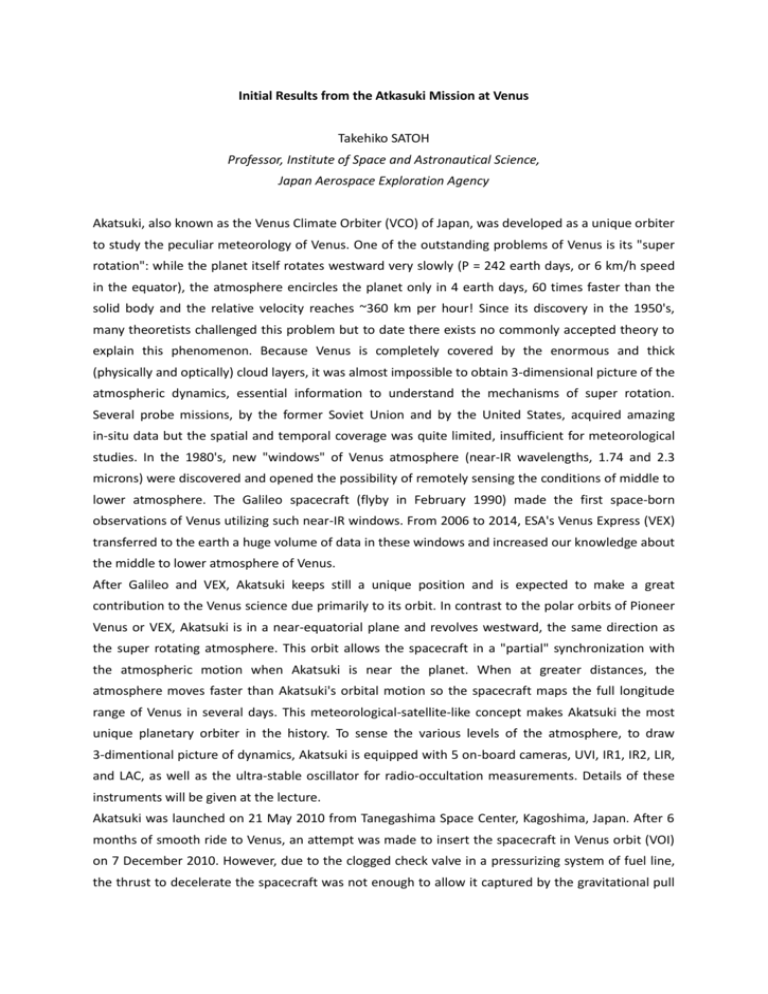
Initial Results from the Atkasuki Mission at Venus Takehiko SATOH Professor, Institute of Space and Astronautical Science, Japan Aerospace Exploration Agency Akatsuki, also known as the Venus Climate Orbiter (VCO) of Japan, was developed as a unique orbiter to study the peculiar meteorology of Venus. One of the outstanding problems of Venus is its "super rotation": while the planet itself rotates westward very slowly (P = 242 earth days, or 6 km/h speed in the equator), the atmosphere encircles the planet only in 4 earth days, 60 times faster than the solid body and the relative velocity reaches ~360 km per hour! Since its discovery in the 1950's, many theoretists challenged this problem but to date there exists no commonly accepted theory to explain this phenomenon. Because Venus is completely covered by the enormous and thick (physically and optically) cloud layers, it was almost impossible to obtain 3-dimensional picture of the atmospheric dynamics, essential information to understand the mechanisms of super rotation. Several probe missions, by the former Soviet Union and by the United States, acquired amazing in-situ data but the spatial and temporal coverage was quite limited, insufficient for meteorological studies. In the 1980's, new "windows" of Venus atmosphere (near-IR wavelengths, 1.74 and 2.3 microns) were discovered and opened the possibility of remotely sensing the conditions of middle to lower atmosphere. The Galileo spacecraft (flyby in February 1990) made the first space-born observations of Venus utilizing such near-IR windows. From 2006 to 2014, ESA's Venus Express (VEX) transferred to the earth a huge volume of data in these windows and increased our knowledge about the middle to lower atmosphere of Venus. After Galileo and VEX, Akatsuki keeps still a unique position and is expected to make a great contribution to the Venus science due primarily to its orbit. In contrast to the polar orbits of Pioneer Venus or VEX, Akatsuki is in a near-equatorial plane and revolves westward, the same direction as the super rotating atmosphere. This orbit allows the spacecraft in a "partial" synchronization with the atmospheric motion when Akatsuki is near the planet. When at greater distances, the atmosphere moves faster than Akatsuki's orbital motion so the spacecraft maps the full longitude range of Venus in several days. This meteorological-satellite-like concept makes Akatsuki the most unique planetary orbiter in the history. To sense the various levels of the atmosphere, to draw 3-dimentional picture of dynamics, Akatsuki is equipped with 5 on-board cameras, UVI, IR1, IR2, LIR, and LAC, as well as the ultra-stable oscillator for radio-occultation measurements. Details of these instruments will be given at the lecture. Akatsuki was launched on 21 May 2010 from Tanegashima Space Center, Kagoshima, Japan. After 6 months of smooth ride to Venus, an attempt was made to insert the spacecraft in Venus orbit (VOI) on 7 December 2010. However, due to the clogged check valve in a pressurizing system of fuel line, the thrust to decelerate the spacecraft was not enough to allow it captured by the gravitational pull of Venus. Since then, Akatsuki became an artificial planet around the sun with an orbital period of ~200 days. The project team, however, did not give up and after 5 years (9 revolutions of Akatsuki), the second attempt (VOI-R1) was made on the same day, 7 December 2015. It was a great surprise to the world that a "once failed" spacecraft made a successful orbital insertion after many years of time, but we did it! The long journey of Akatsuki, although in a compressed format, will also be presented at the lecture.


